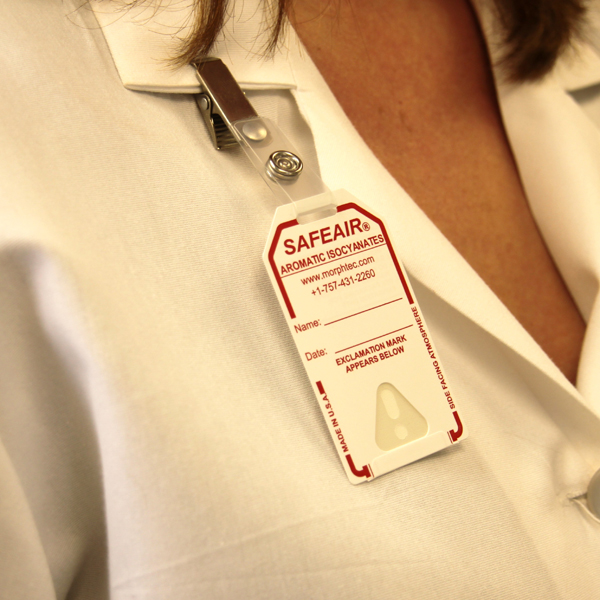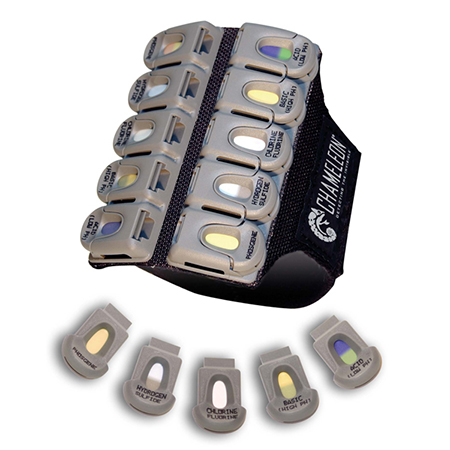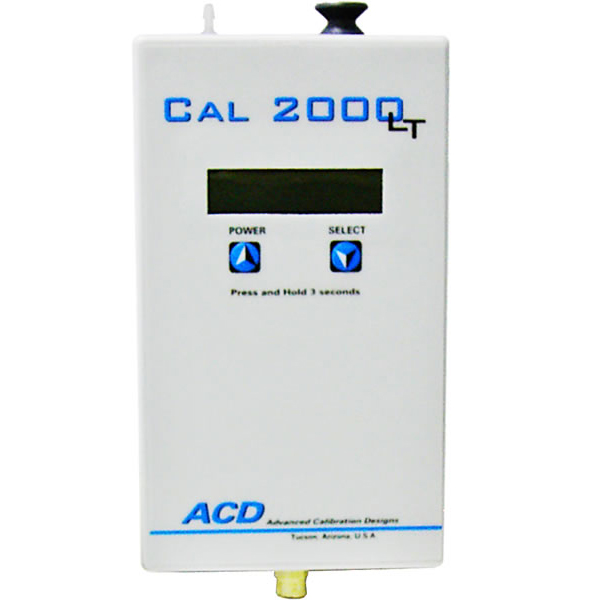Description
Description
The Chlorine Colorimetric ChromAir Badge is a patented direct-read autogenic exposimeter. The device is constructed from six cells attached on one side to a flat indicator layer and on the other side to a series of different diffusive resistances. Chlorine gas diffuses to the cells through the different diffusive resistances and reacts with the indicator layer, producing color change from yellow to orange. The color produced on the indicator layer is a direct measure of the exposure dose. Visual color comparison is achieved by observing the formation of the orange threshold color on the individual cell and reading the corresponding exposure dose.
Chlorine is a greenish-yellow gas with a pungent, irritating odor. Generally, chlorine is a potent respiratory system irritant. Mild exposures to chlorine cause burning of eyes, nose and mouth. Exposure to high concentrations (e.g. 1000 ppm) is likely to be fatal. The NIOSH REL (recommended exposure limit) for chlorine is 0.5 ppm (ceiling), whereas the OSHA PEL (permissible exposure limit) is 1ppm (ceiling). Chlorine is an important chemical commodity widely used in the production of safe drinking water. It is also extensively used in the production of paper products, dyestuffs, textiles, petroleum products, chlorinated solvents, etc.






